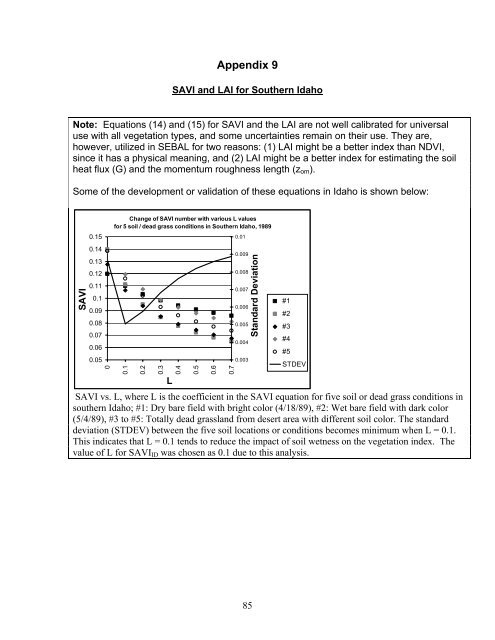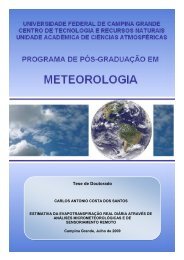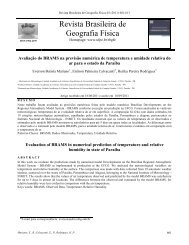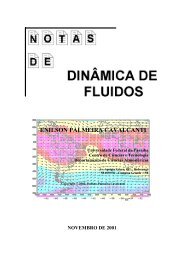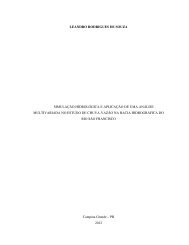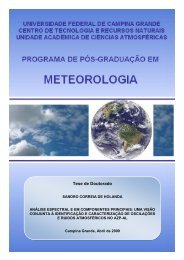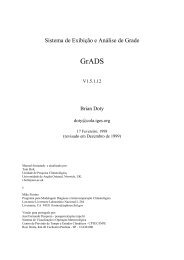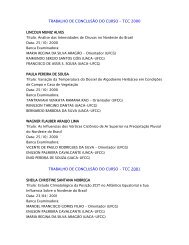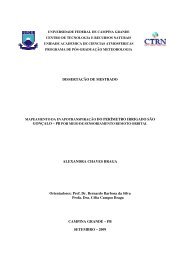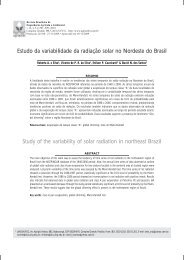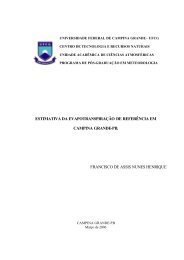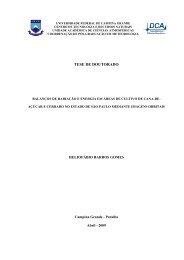Create successful ePaper yourself
Turn your PDF publications into a flip-book with our unique Google optimized e-Paper software.
Appendix 9SAVI and LAI for Southern IdahoNote: Equations (14) and (15) for SAVI and the LAI are not well cali<strong>br</strong>ated for universaluse with all vegetation types, and some uncertainties remain on their use. They are,however, utilized in <strong>SEBAL</strong> for two reasons: (1) LAI might be a better index than NDVI,since it has a physical meaning, and (2) LAI might be a better index for estimating the soilheat flux (G) and the momentum roughness length (z om ).Some of the development or validation of these equations in Idaho is shown below:SAVI0.150.140.130.120.110.10.090.080.070.060.050Change of SAVI number with various L valuesfor 5 soil / dead grass conditions in Southern Idaho, 19890.10.20.3L0.40.50.60.70.010.0090.0080.0070.0060.0050.0040.003Standard Deviation#1#2#3#4#5STDEVSAVI vs. L, where L is the coefficient in the SAVI equation for five soil or dead grass conditions insouthern Idaho; #1: Dry bare field with <strong>br</strong>ight color (4/18/89), #2: Wet bare field with dark color(5/4/89), #3 to #5: Totally dead grassland from desert area with different soil color. The standarddeviation (STDEV) between the five soil locations or conditions becomes minimum when L = 0.1.This indicates that L = 0.1 tends to r<strong>edu</strong>ce the impact of soil wetness on the vegetation index. Thevalue of L for SAVI ID was chosen as 0.1 due to this analysis.85


